Magnetic Effects of Electric Current Class 10th Notes - Free NCERT Class 10 Science Chapter 13 Notes - Download PDF
Have you ever questioned yourself as to why a magnet attracts some materials or how a magnetic field can be generated by using an electric current? These are interesting concepts as they are described in Chapter 12 of Science Class 10: Magnetic Effects of Electric Current. The chapter makes you realise the connection between electricity and magnetism, and how all the modern-day electrical machines, such as motors, generators, electric bells, and circuit breakers, work. It is a high-weightage chapter for CBSE Class 10 Exam Boards, NTSE, NSO, NSEJS and other science Olympiads.
This Story also Contains
- NCERT notes Class 10 Science Chapter 12 Magnetic Effects of Electric Current: Download PDF
- Magnetic Effects of Electric Current Class 10 Science Notes
- How to Master Class 10 Science Chapter 12 Magnetic Effects of Electric Current?
- Importance of Class 10 Physics Chapter 12 Magnetic Effects of Electric Current Notes
- NCERT Class 10 Science Chapter Wise Notes
- NCERT Books and Syllabus
The NCERT notes Class 10 Science Chapter 12 Magnetic Effects of Electric Current are given by the experts of Careers360, in accordance with the latest CBSE syllabus and simplify all the major concepts. The key areas discussed in these notes include magnetic fields, magnetic field lines, magnetic field due to a current-carrying conductor, the right-hand thumb rule, electromagnets, and domestic electric circuits. These NCERT notes are clear and simple to explain with clear diagrams, real-life applications and easy to understand, making revision quicker and understanding deeper. No matter whether you are about to take exams in school or have a competition, these NCERT notes Class 10 Science Chapter 12 Magnetic Effects of Electric Current would allow you to learn the concepts at ease and with precision.
Also Read
NCERT notes Class 10 Science Chapter 12 Magnetic Effects of Electric Current: Download PDF
The Class 10 Science Chapter 12 Magnetic Effects of Electric Current Notes PDF is a compact and well-structured resource to revise and prepare for the science exams. These Magnetic Effects of Electric Current Class 10 Science Notes are written in a simple format and explain major concepts, formulae and diagrams in an easy-to-understand format as per the current CBSE syllabus. The PDF with clear explanations and exam-centred material helps students prepare better and achieve better results in exams.
Magnetic Effects of Electric Current Class 10 Science Notes
The Magnetic Effects of Electric Current Class 10 Science Chapter 12 CBSE notes provide a concise summary in a clear and understandable form in order to enable students to prepare effectively to take exams. All major concepts, rules, and diagrams are brought out in these Magnetic Effects of Electric Current Class 10 Science Notes in simple and student-friendly form. In line with the current CBSE syllabus, they prepare quickly, in an organised manner and are very efficient in board exams and competitive tests.
Magnetic Field
A magnetic field is the area around a magnet where any other magnetic element can feel its influence.
(i) The SI unit of magnetic field intensity is tesla (T) or Weber per square metre ( $\mathrm{Wb} \mathrm{m}^{-2}$ ).
(ii) The CGS unit of magnetic field intensity is gauss ( G ) [1 $\mathrm{T}=10^4$ gauss].
(iii) The magnetic field is a vector quantity, because its complete specification needs both direction as well as magnitude.
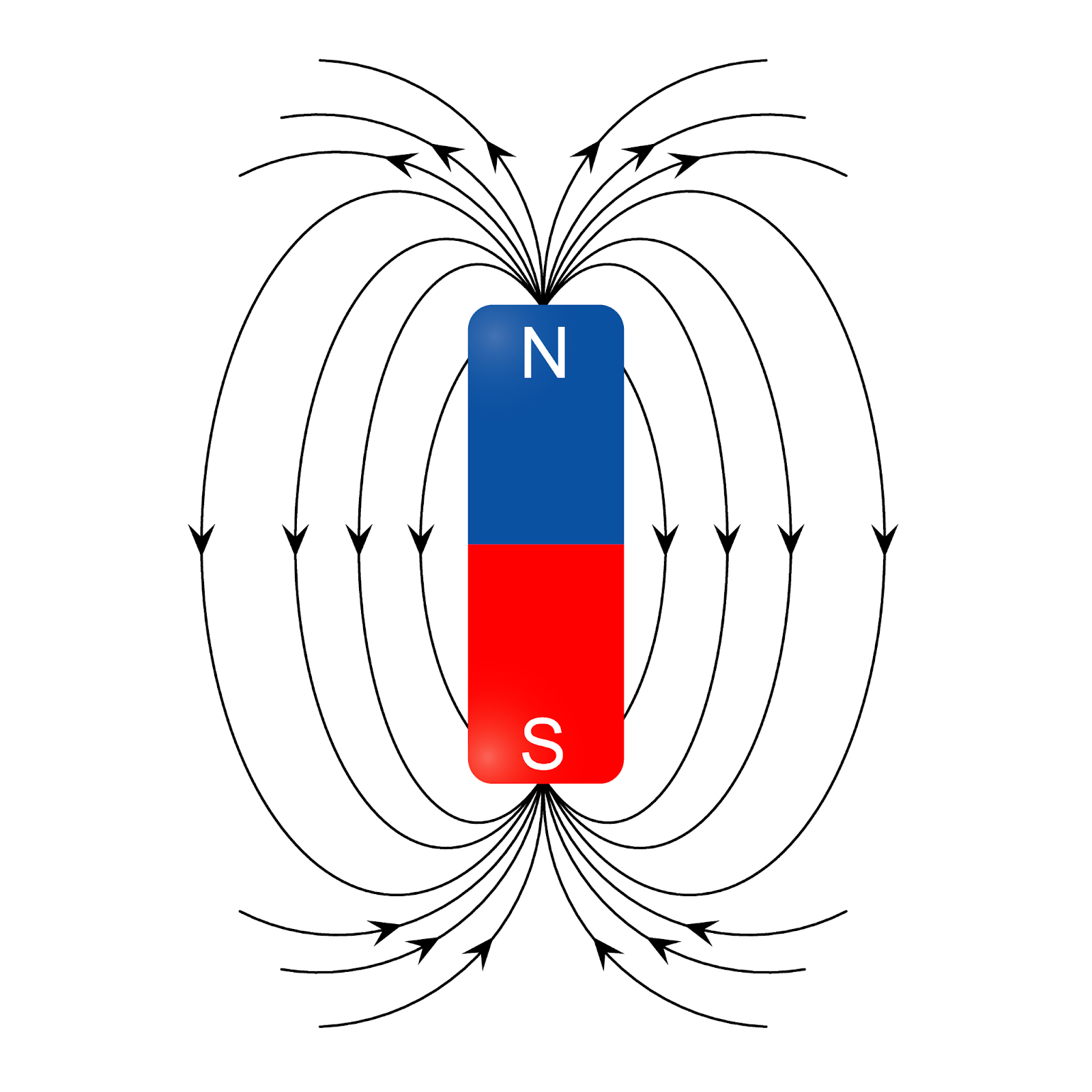
Magnetic Field Lines
Magnetic field lines represent the magnetic field; it is a path, either straight or curved, the tangent to which at any point gives the direction of the magnetic field at that point.
Properties of Magnetic Field Lines
(i) These are always closed loops.
(ii) The lines point from the north pole to the south pole outside the magnet and from the south pole to the north pole inside it.
(iii) The magnetic field lines never cross each other. If they do so, then at the point of intersection, there will be two tangents which give two directions of the magnetic field at the same point, which is not possible.
(iv) The density of the lines is proportional to the strength of the magnetic field.
(v) In the region of a stronger field, the lines converge, and in the region of a weaker field, the lines diverge.
Magnetic Field Due to a Current-Carrying Conductor
When an electric current flows through a conductor (like a wire), it creates a magnetic field around it. This was first discovered by Hans Christian Oersted.
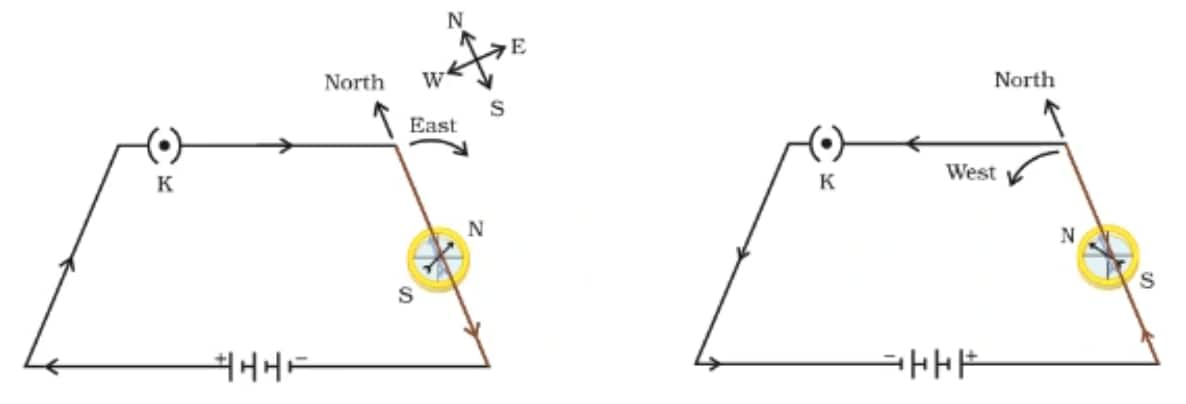
- The direction of the magnetic field depends on the direction of the current.
- The Right-Hand Thumb Rule helps to find this direction.
Magnetic Field due to a Current through a Straight Conductor
The magnetic field lines around a straight conductor carrying current are concentric circles on planes perpendicular to the direction of current.

The direction of the magnetic field due to a straight current-carrying wire can be obtained by the 'Right Hand Thumb Rule'.

Right-hand thumb rule :
Imagine yourself grasping a current-carrying conductor with your right hand, so that the thumb lies along the conductor in the direction of the current, then the fingers of your hand will be encircling the conductor in the direction of the magnetic field lines caused by the current.
Magnetic Field due to a Current through a Circular Loop
The magnetic field lines around a circular current-carrying coil are as shown in the figure below. Every point on the wire carrying current would give rise to the magnetic field appearing as straight lines at the centre of the loop.
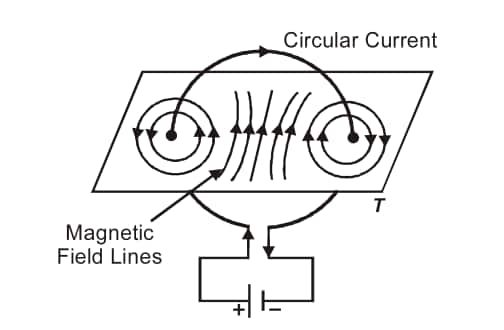
Magnetic Field due to a Current in a Solenoid
(a) A solenoid is a long cylindrical coil containing a large number of closely spaced turns of insulated copper wire.
(b) The magnetic field produced by a current-carrying solenoid is similar to the magnetic field produced by a bar magnet.

Electromagnet
If a core of ferromagnetic material, such as soft iron, is placed inside a solenoid, the magnetic field strength inside the solenoid is greatly increased. Because of the permeability of the iron, the field lines within the solenoid crowd into the iron core. This has two effects. First, the crowding concentrates the field lines due to the solenoid; the closer together the field lines, the stronger the field. Second, the field lines from the solenoid induce a magnetism inside the iron core, so that the ferromagnetic material becomes a magnet whose field supplements the field of the solenoid. Electromagnets are widely used as components of electrical devices such as motors, generators, electric bells, etc.

Force on a Current-Carrying Conductor in a Magnetic Field
When a current-carrying conductor is placed in a magnetic field, it experiences a force. This is the principle behind electric motors and many other electromagnetic devices.
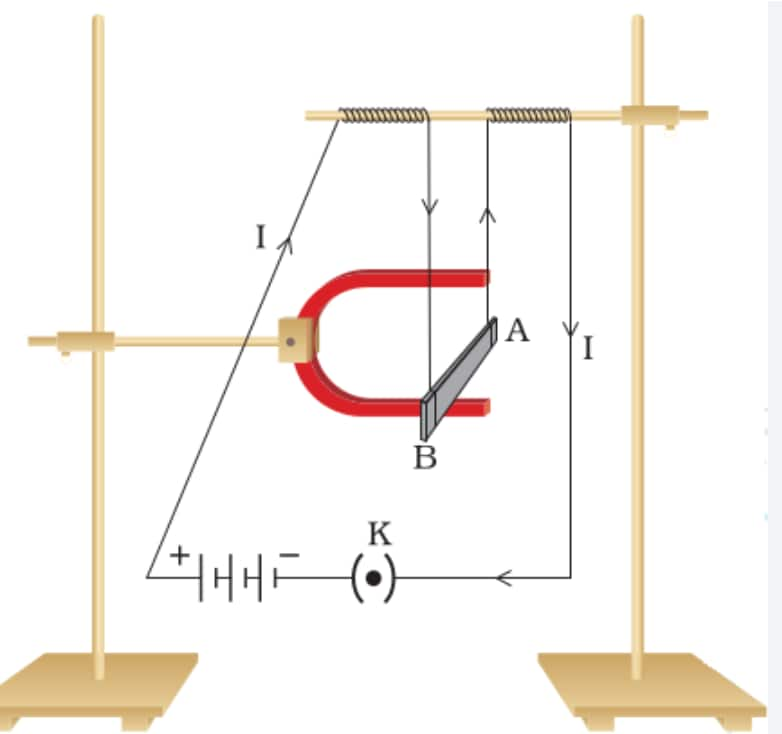
Fleming's left-hand rule
If the forefinger, the second finger and the thumb of the left hand are stretched at right angles to each other, with the forefinger pointing in the direction of the field and the second finger in the direction of the current, then the thumb indicates the direction of the force. It is called Fleming's left-hand rule.

Domestic Electric Circuits
A domestic electric circuit is the wiring system used in homes to supply electricity to various appliances. It connects electrical devices like fans, lights, refrigerators, and TVs to the main power supply safely and efficiently.
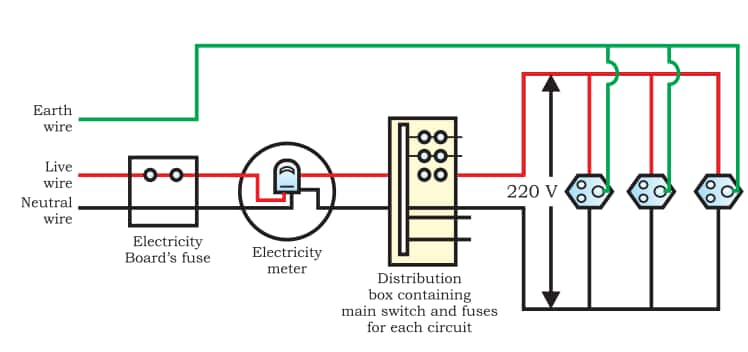
How to Master Class 10 Science Chapter 12 Magnetic Effects of Electric Current?
To learn Class 10 science Chapter 12 effectively, one needs to develop a solid background of magnetic field and direction rules and the relationship between electricity and magnetism. By having a plan and practising it regularly, students may easily master various diagrams, rules, and applications that can be found on board exams. Therefore, a systematic process contributes to better accuracy, visualisation, and scoring possibilities of this critical chapter.
- Start by learning about the meaning of the magnetic field and field lines with the help of diagrams.
- Study the characteristics of magnetic field lines, which are often asked in the exams.
- Learn the right-hand thumb rule, and practice the concept by imagining it with some examples, such as straight current-carrying conductors.
- Learn about the magnetic field produced by a current-carrying wire, loop and solenoid using diagrams.
- Compare a bar magnet and a solenoid in a table form and memorise the differences between them.
- Read about the process of making and the use of electromagnets and permanent magnets.
- Practice Fleming's Left-Hand Rule, and how to use it, particularly in the case of electric motors.
- Revise the concept of domestic electric circuits, including live wire, neutral wire, earth wire, fuse, and MCB.
- Solve all NCERT questions, examples, and numericals that involve direction rules and circuit concepts.
Importance of Class 10 Physics Chapter 12 Magnetic Effects of Electric Current Notes
The NCERT notes Class 10 Science Chapter 12 Magnetic Effects of Electric Current are very useful as they simplify complex concepts like magnetic fields, magnetic field lines, electromagnets, solenoids, and the rules of direction into simple,easy-to-understand concepts. These notes would assist students in revising all significant diagrams, formulae and applications that keep recurring in CBSE Class 10 Board Exams within the shortest possible time. They reinforce the clarity of concepts by going into the stepwise diagrams of how key mechanisms such as electric motors, generators and domestic circuits work using real-life examples. These NCERT Class 10 Magnetic Effects of Electric Current notes, with brief summaries, exam-based points, and solved examples, help to revise faster and have long-term memory. They also prove to be very handy in the competitive exams, such as NTSE, NSO and NSEJS, and thus are a very critical study tool in attaining good marks, as well as mastering the chapter effectively.
NCERT Class 10 Science Chapter Wise Notes
The NCERT Class 10 Science Chapter-Wise Notes give the students an easily accessible repository of all significant topics in one location, thus allowing revision to be quicker and more efficient. These are the most recent CBSE syllabus notes and have the concepts that are easily understood and simple to understand. Having chapter-wise links that can be accessed at once, students can find whatever they require easily and study better to take exams.
NCERT Solutions of Class 10 Subject Wise
NCERT Class 10 Exemplar Solutions for Other Subjects:
Frequently Asked Questions (FAQs)
Each magnet has two poles: north and south.
Poles that are opposite each other attract each other, while poles that are the same repel each other.
A magnet that is free to move will align itself in a north-south direction.
In Magnetic Effects of Electric Current Class 10 notes The field lines, or field lines of a magnet, are imaginary lines that show the magnetic field of a certain magnet. When we let iron fillings settle around bar magnets, they automatically form a pattern that resembles the magnet's field lines. A compass can also be used to determine the field lines of magnets. It's a vector quantity, which means that it has both magnitude and direction.
According to, Class 10 Science chapter 12 notes a magnet is any material that can generate a magnetic field that can attract or repel other magnetically comparable materials.
The Lodestone is one such naturally occurring magnet. This has the ability to attract metals like iron and nickel.
In when an electric current is allowed to flow through a current-carrying conductor, it can generate a magnetic field. The experiment with a magnetic needle that can show deflection can help to understand this. The deflection will be bigger as the current flow increases. When the direction of this current changes, so does the direction of the deflection.
These topics can also be downloaded from Magnetic Effects of Electric Current Class 10 notes pdf download.
NCERT notes for Class 10 Science chapter 12 are about magnets and their many qualities. Magnetic field, magnetic field created by a straight wire, magnetic field produced by a circular loop, and magnetic field produced by a solenoid are some of the subtopics discussed in this chapter. Electromagnets, kicking wire experiments, Fleming's right-hand rule, Lenz's law, AC generators, Earthing, and other devices can vary the strength of a magnetic field.
Courses After 12th
Applications for Admissions are open.
As per latest syllabus. Physics formulas, equations, & laws of class 11 & 12th chapters
JEE Main Important Chemistry formulas
Get nowAs per latest syllabus. Chemistry formulas, equations, & laws of class 11 & 12th chapters
JEE Main high scoring chapters and topics
Get nowAs per latest 2024 syllabus. Study 40% syllabus and score upto 100% marks in JEE
JEE Main Important Mathematics Formulas
Get nowAs per latest syllabus. Maths formulas, equations, & theorems of class 11 & 12th chapters
